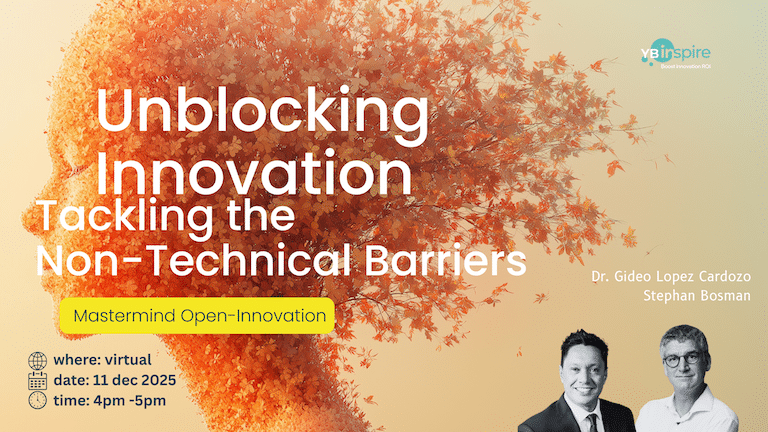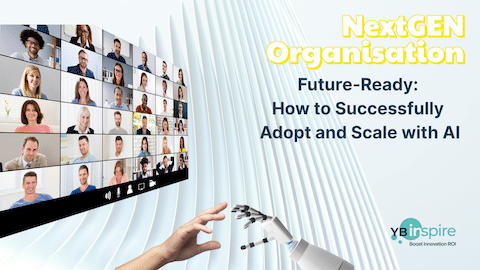This article aims to explore the concept of antifragility, a term popularized by Nassim Nicholas Taleb. We will delve into the definition of antifragility, contrasting it with resilience, and examine Taleb’s contributions to this field. Examples and applications of antifragility in various systems will also be discussed, providing a comprehensive understanding of this powerful concept. We are happy to take you on our journey understanding. Antifragile: Definition, Principles and Examples of Antifragility.
Understanding the Definition of Antifragility
Definition of Antifragile
Antifragility is a unique property of systems, allowing them to not only withstand stressors and shocks but also to improve and grow stronger as a result of exposure to them. This is a fundamentally different concept from fragility, where systems degrade and break down under stress. Nassim Nicholas Taleb formally defines antifragility as “a convex response to a stressor or source of harm (for some range of variation), leading to a positive sensitivity to increase in volatility.” According to Taleb, antifragility goes beyond resilience or robustness. He claims that the benefit from shocks is the core of the concept of antifragility.
Concept of Antifragility vs. Resilience
The concept of antifragility represents a paradigm shift in how we view systems facing uncertainty and stress. While resilience allows a system to bounce back to its original state after a shock, and robustness enables it to withstand the shock without significant change, antifragility goes a step further. An antifragile system actually benefits from disorder, volatility, and stressors, becoming stronger and more adaptable as a result. Nassim Nicholas Taleb emphasizes that “the resilient resists shocks and stays the same; the antifragile gets better.” Therefore, the distinction between resilience and antifragility is very important. Antifragile systems thrive on randomness and benefit from shocks, a concept alien to resilient ones.
Nassim Nicholas Taleb's Contributions
Nassim Nicholas Taleb is the intellectual force behind the concept of antifragility. He introduced this term in his 2012 book, “Antifragile: Things That Gain From Disorder.” In his search for the opposite of fragile, Nassim Taleb found that neither resilience nor robustness fully captured the essence of systems that improve with disorder. Taleb’s exploration of antifragility is deeply rooted in his broader work on randomness, uncertainty, and decision making, as explored in his earlier books like “Fooled by Randomness” and “The Black Swan.” Through his work, Taleb encourages us to rethink system design and risk analysis, advocating for strategies that embrace volatility rather than avoid it. Nassim Taleb views the properties of antifragility as a crucial element in complex systems.
The Principles of Antifragility
Key Properties of Antifragility
At its core, antifragility has a mathematical foundation, heavily reliant on convexity and Jensen’s Inequality. Convexity describes a nonlinear relationship in which the benefits derived from positive variations surpass the harm caused by negative variations of equal magnitude. Imagine a situation where small losses have minimal impact, but occasional large gains provide significant benefits. This type of curve depicts an antifragile response, where the benefits from disturbances are greater than the losses. This is a defining characteristic of antifragility. Conversely, a concave curve illustrates fragility, where losses exceed potential gains. Nassim Nicholas Taleb emphasizes that embracing this convexity is essential for designing systems that thrive in uncertain environments. The antifragile entity benefits from this variability, showcasing how antifragility leverages randomness to its advantage.
How Things Gain from Disorder
Antifragility is defined as “a property of systems in which they increase in capability to thrive as a result of stressors, shocks, volatility, noise, mistakes, faults, attacks, or failures.” This means that instead of merely weathering the storm, an antifragile system harnesses the energy of the storm to become stronger. This is beyond resilience or robustness. Consider biological systems. Exposure to small doses of stress can lead to adaptation and improved performance. Nassim Nicholas Taleb highlights that this ability to learn and adapt from disorder is what separates antifragility from resilience. Instead of being merely resilient, the anti-fragile system uses the disorder to become more robust, more efficient, and more capable. Embracing this concept of antifragility requires a shift in mindset, viewing stressors not as threats, but as opportunities for growth and improvement. Nassim Taleb views this ability to leverage disorder as key to navigating complex systems.
Practical Applications of Antifragile Principles
Antifragility offers valuable insights for policy development and governance. A mixed approach involving the private sector, civil society, and the public sector enables coordinated responses by leveraging diverse competencies and resources. This approach promotes ecosystem antifragility. The idea that decisions should be made at the lowest practical level, as applied in the European Union, represents a positive application of anti-fragility principles, as it promotes local solutions and reduces centralized fragility. Using top-down authority to activate and coordinate various stakeholders creates cohesion during pre- and post-recovery phases. According to Nassim Nicholas Taleb, this ensures resources are allocated efficiently and responses are well-coordinated. Also, effective consultation with local communities strengthens resilience and adaptive capacity. By incorporating these strategies, political systems can move beyond resilience and embrace antifragility, ultimately becoming stronger and more adaptable in the face of adversity.
Examples of Antifragility in Real Life
Natural systems often exhibit traits of antifragility, showcasing how exposure to stressors can lead to enhanced capabilities. Biological systems, for example, demonstrate this principle effectively. Consider the human immune system, which is a prime illustration of antifragility in action. Biological defense mechanisms grow stronger through exposure to pathogens, developing enhanced protection against future threats[14]. Natural Immune Systems grow stronger through exposure to pathogens, developing enhanced protection against future threats[14].
When exposed to pathogens, the body doesn’t just resist; it learns and adapts. This exposure triggers the development of antibodies and defense mechanisms that provide increased protection against future encounters with the same pathogens. In essence, the immune system becomes stronger because of the stressor. Nassim Nicholas Taleb uses this type of example when discussing antifragility. He argues that such systems are not merely resilient but actively benefit from the challenges they face. The concept of anti-fragility in biological systems highlights the importance of variability and the potential for growth through exposure to controlled stressors. The more variability, the better antifragile gets.
Business and Economic Models
In the business world, antifragility can be observed in companies that adapt and thrive amid economic downturns or market volatility. These organizations often view setbacks as opportunities to innovate, streamline operations, and capture market share from less adaptable competitors. The technology ecosystem views market failures as opportunities, creating value through companies that address identified problems[14].
Nassim Nicholas Taleb emphasizes that the technology sector is a prime example of this, where failure is seen as a learning opportunity. Companies that can rapidly iterate and learn from their mistakes are often the ones that emerge stronger in the long run. The antifragile gets better, especially in the face of intense competition and rapid technological change. Embracing uncertainty and viewing challenges as opportunities are key to fostering anti-fragility in business. This involves creating a culture of experimentation and encouraging employees to tinker and innovate. The focus is on building systems that can not only withstand shocks but also benefit from them, leading to long-term growth and success. These antifragile systems provide ecosystem antifragility.
Personal Development and Growth
Antifragility also plays a significant role in personal development and growth. Varied physical challenges strengthen different muscle groups and build resilience. For example, a snowboarder who becomes accustomed to falling at high speed may develop techniques that prevent injury[3]. Exposure to various pathogens in small doses can enhance immune response over time, similar to vaccination principles[3][11].
Exposure to challenges and setbacks can be a powerful catalyst for personal growth, fostering resilience, adaptability, and a stronger sense of self.
Consider an athlete who pushes their limits during training. The stress and strain on their body lead to muscle growth and increased strength. In this way, the body doesn’t just recover. It becomes stronger because of the stress. Nassim Nicholas Taleb highlights the importance of embracing challenges and stepping outside one’s comfort zone to cultivate antifragility. He argues that avoiding risk and uncertainty can actually hinder personal growth. The goal is to embrace controlled stressors and learn from failures. Over time, this can lead to increased confidence, resilience, and the ability to thrive in the face of adversity. Thus, antifragility is a key component of personal development and overall well-being. This is beyond resilience or robustness.

Conclusion
Recap of Antifragility Principles
Antifragility, as conceptualized by Nassim Nicholas Taleb, offers practical strategies for individuals, organizations, and systems to transform challenges into opportunities for growth and improvement. The core idea behind antifragility is that certain entities thrive on volatility, randomness, and disorder, becoming stronger as a result. This is distinct from resilience, which only allows a system to return to its original state after a shock, and robustness, which enables it to withstand stress without significant change. The principles of antifragility involve embracing convexity. It also incorporates understanding how systems can benefit from stressors, and designing with the understanding that disturbances can be beneficial. By adopting this mindset, we can create antifragile systems that are not merely resistant to shocks but actively improve because of them. Nassim Taleb highlights that this is more than resilience or robustness.
Future Implications of Embracing Antifragility
The future directions for antifragility research are numerous and promising. Further empirical validation across diverse contexts and domains is needed to solidify the theoretical foundations of the concept of antifragility. Developing standardized metrics to measure degrees of antifragility will also be crucial for practical application and comparison across different systems. Integration with emerging technologies like artificial intelligence and machine learning offers exciting possibilities for creating antifragile systems that can adapt and learn in real-time. Applying the principles of antifragility to pressing global challenges, such as climate change, pandemic response, and economic volatility, could lead to innovative solutions that not only mitigate risks but also foster growth and innovation. Nassim Nicholas Taleb encourages us to embrace antifragility as both a conceptual framework and practical approach. We can build systems that not only withstand the tests of time and change but actively evolve to become stronger through exposure to volatility, uncertainty, and disorder.
Final Thoughts on Anti-fragility
In conclusion, the concept of antifragility, championed by Nassim Nicholas Taleb, presents a novel framework for understanding and designing systems that thrive in the face of uncertainty and disorder. By shifting our focus from mere resilience to actively seeking out and embracing stressors, we can unlock the potential for growth and improvement in various domains. Antifragile systems aren’t just about surviving chaos. They’re about leveraging it. Nassim Taleb’s work challenges us to rethink traditional approaches to risk management and system design. This promotes a more dynamic and adaptive mindset. As we continue to grapple with increasingly complex and unpredictable challenges, the principles of antifragility offer a valuable roadmap for building a more robust and flourishing future. Nassim Taleb has provided us with the opportunity to rethink how we view randomness and antifragility of systems as key components to the future.










